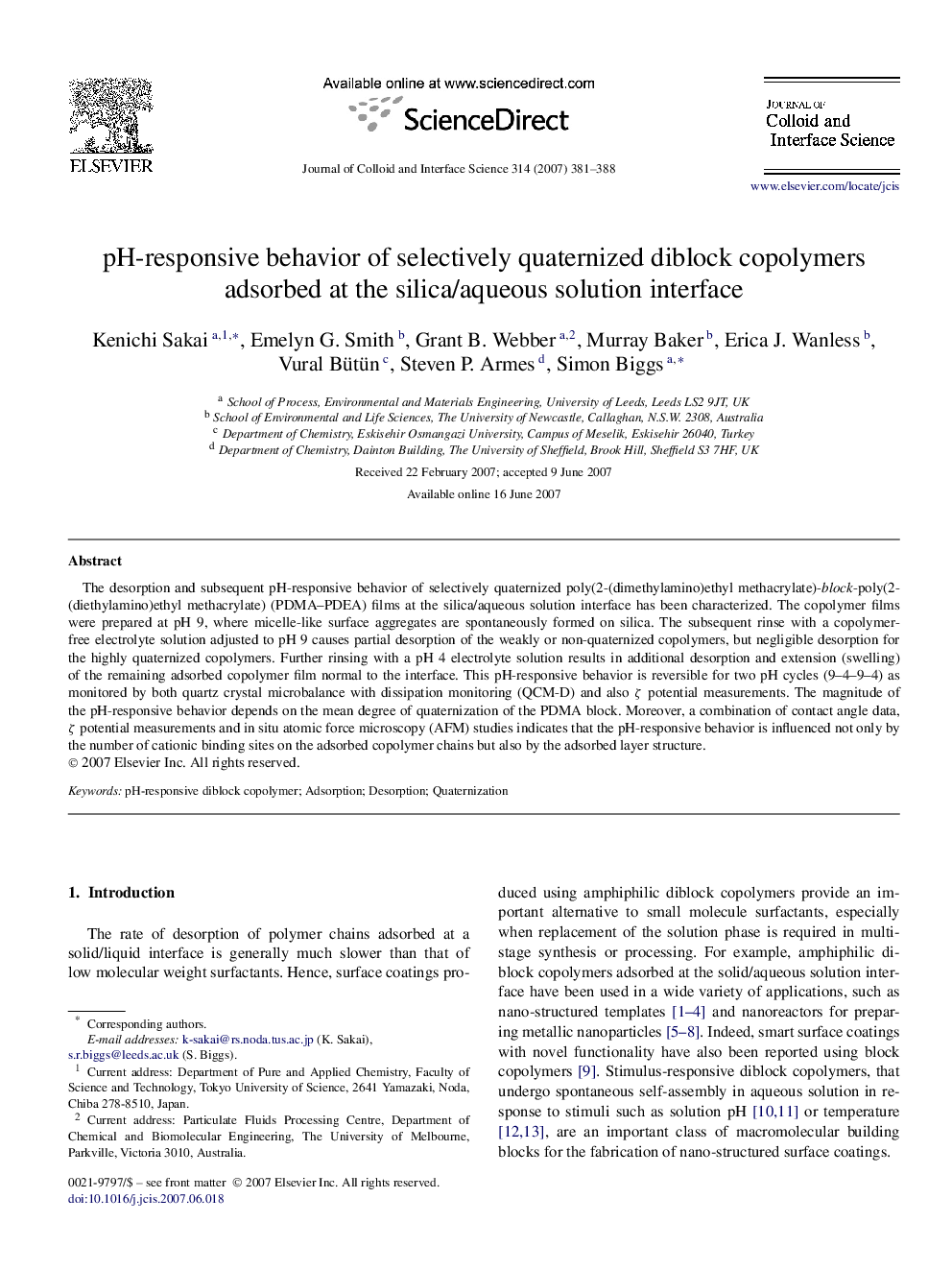| Article ID | Journal | Published Year | Pages | File Type |
|---|---|---|---|---|
| 612103 | Journal of Colloid and Interface Science | 2007 | 8 Pages |
The desorption and subsequent pH-responsive behavior of selectively quaternized poly(2-(dimethylamino)ethyl methacrylate)-block-poly(2-(diethylamino)ethyl methacrylate) (PDMA–PDEA) films at the silica/aqueous solution interface has been characterized. The copolymer films were prepared at pH 9, where micelle-like surface aggregates are spontaneously formed on silica. The subsequent rinse with a copolymer-free electrolyte solution adjusted to pH 9 causes partial desorption of the weakly or non-quaternized copolymers, but negligible desorption for the highly quaternized copolymers. Further rinsing with a pH 4 electrolyte solution results in additional desorption and extension (swelling) of the remaining adsorbed copolymer film normal to the interface. This pH-responsive behavior is reversible for two pH cycles (9–4–9–4) as monitored by both quartz crystal microbalance with dissipation monitoring (QCM-D) and also ζ potential measurements. The magnitude of the pH-responsive behavior depends on the mean degree of quaternization of the PDMA block. Moreover, a combination of contact angle data, ζ potential measurements and in situ atomic force microscopy (AFM) studies indicates that the pH-responsive behavior is influenced not only by the number of cationic binding sites on the adsorbed copolymer chains but also by the adsorbed layer structure.
Graphical abstractThe pH-responsive behavior of quaternized diblock copolymers adsorbed on silica has been characterized on the basis of the adsorbed amount, contact angle, ζ potential and in situ AFM data.Figure optionsDownload full-size imageDownload as PowerPoint slide
